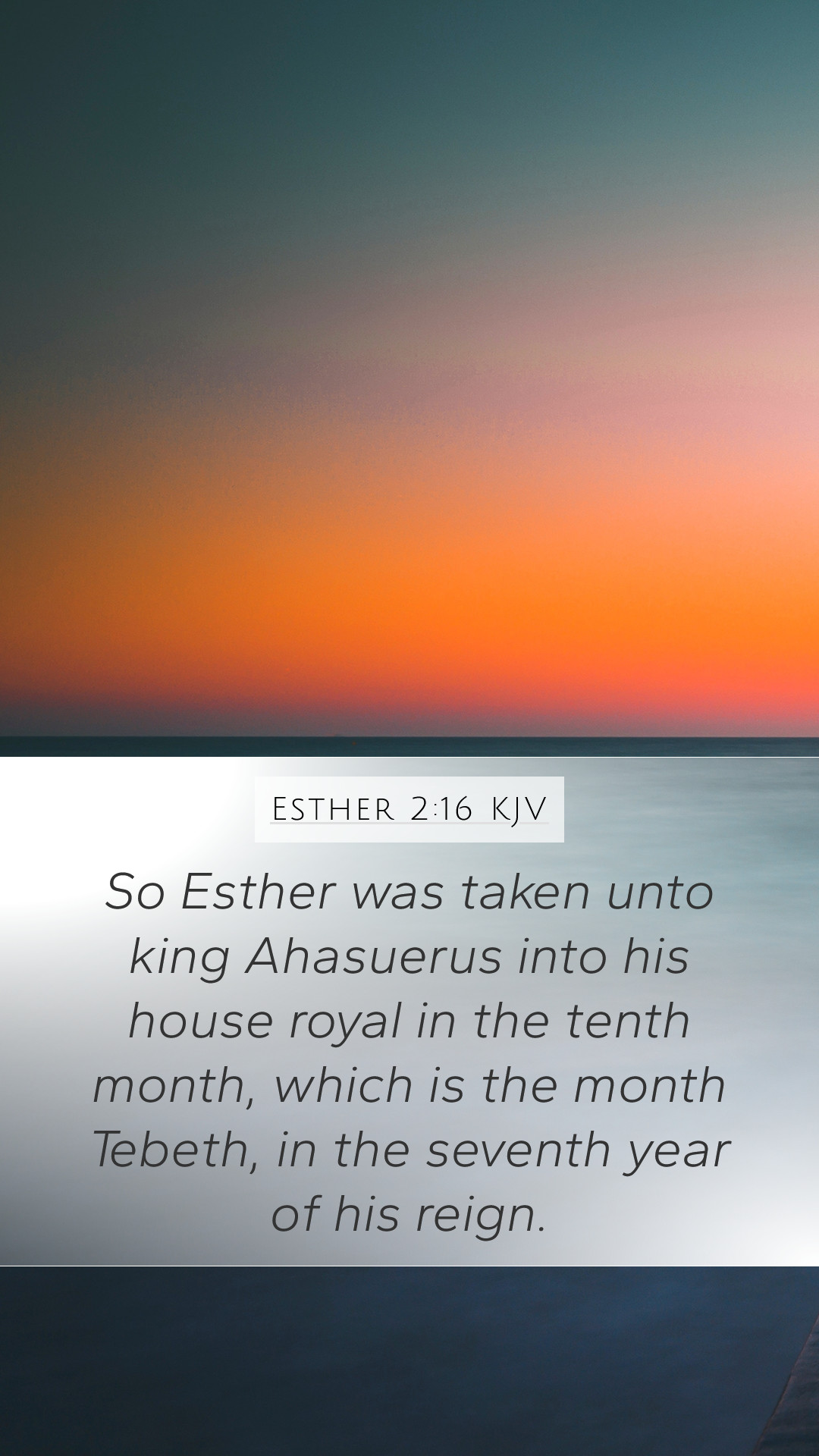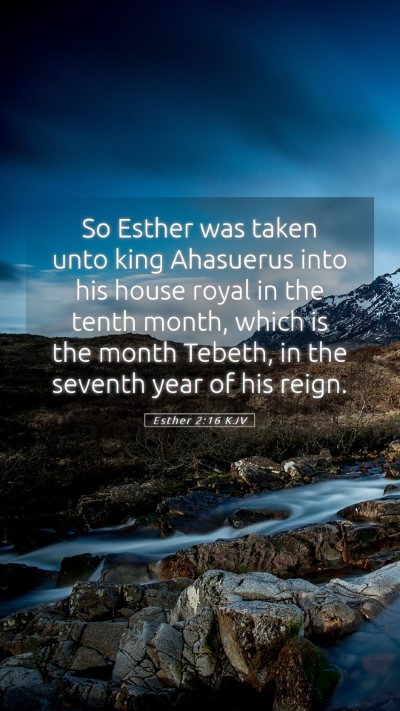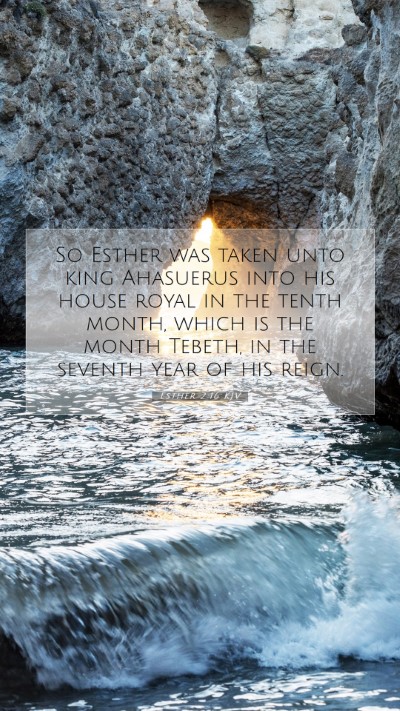Old Testament
Genesis Exodus Leviticus Numbers Deuteronomy Joshua Judges Ruth 1 Samuel 2 Samuel 1 Kings 2 Kings 1 Chronicles 2 Chronicles Ezra Nehemiah Esther Job Psalms Proverbs Ecclesiastes Song of Solomon Isaiah Jeremiah Lamentations Ezekiel Daniel Hosea Joel Amos Obadiah Jonah Micah Nahum Habakkuk Zephaniah Haggai Zechariah MalachiEsther 2:16 Meaning
What is the meaning of Esther 2:16?
So Esther was taken unto king Ahasuerus into his house royal in the tenth month, which is the month Tebeth, in the seventh year of his reign.
Esther 2:16 Bible Verse Meaning
Understanding Esther 2:16 - A Comprehensive Bible Verse Commentary
Esther 2:16 reads: "So Esther was taken to King Ahasuerus, into his royal palace, in the tenth month, which is the month of Tebeth, in the seventh year of his reign."
Overview of Esther 2:16
This verse describes the significant transition of Esther from her home to the royal palace, marking a pivotal moment in her life and in the narrative of the Jewish people during the Persian Empire. The context emphasizes Esther's beauty and the favor she finds with the king, setting the stage for her future actions.
Commentary Insights on Esther 2:16
-
Historical Context
Matthew Henry notes that the story of Esther takes place during the reign of King Ahasuerus (commonly identified as Xerxes I), around the 5th century BC. This period is characterized by the Jewish diaspora and their struggles within the Persian Empire.
-
Esther's Selection
Albert Barnes elaborates on Esther being chosen for the king's harem, emphasizing the societal norms of beauty and favor in the ancient world. Her selection was not merely based on physical attributes but also on divine providence, aligning with God’s plan for the Jewish people.
-
The Month of Tebeth
Adam Clarke explains the significance of the timing, noting that the tenth month of Tebeth aligns with specific events in Jewish history. This detail reinforces the notion that Esther's rise to prominence was orchestrated by God, suggesting a divine timeline at work throughout the narrative.
-
King Ahasuerus' Reign
Henry emphasizes understanding Ahasuerus' character, portraying him as a man of great power but also of considerable folly, which will later play a crucial role in the events that unfold. This insight sets a backdrop for the tension between fate and choice in the story.
Applications and Themes
The passage presents several themes relevant for modern readers:
- Divine Providence: The selection of Esther illustrates how God can place individuals in positions of power for a greater purpose.
- Identity and Purpose: Esther, a Jewish maiden, must navigate her identity in a foreign palace, reflecting the struggles of many believers today.
- Faith in Adversity: Esther's eventual rise symbolizes hope and courage, encouraging readers to trust in divine guidance amidst challenges.
- Beauty and Influence: The cultural standards of beauty serve as a reminder of the deeper qualities that influence leadership and impact.
Related Bible Verses
Esther 2:16 can be cross-referenced with:
- Esther 1:19 - A law is established in the kingdom regarding wise counsel.
- Esther 4:14 - Mordecai's encouragement to Esther highlights her crucial role in saving her people.
- Proverbs 21:1 - Illustrates that the king's heart is like rivers of water in the hands of God.
Conclusion
Esther 2:16 serves as a monumental verse in both literary and spiritual aspects, inviting profound examination and reflection. Through Bible study tools and engaging in online Bible study groups, believers can explore the deeper meanings behind Scripture and uncover the powerful messages embedded within such narratives.


